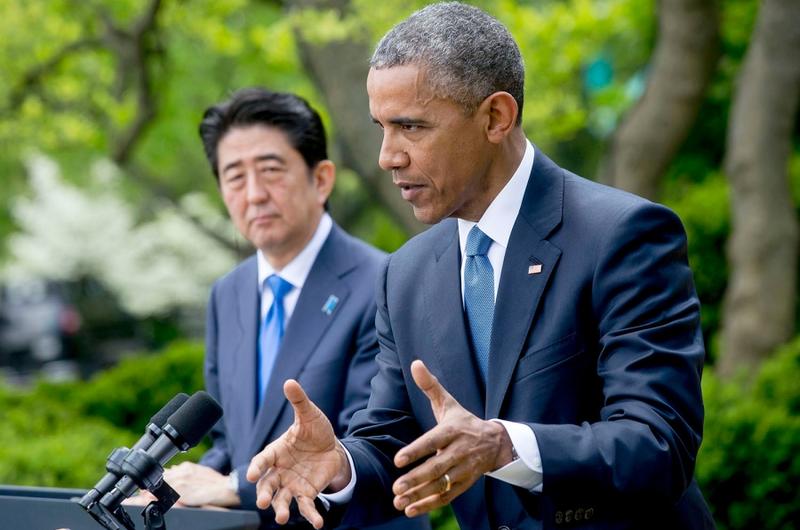

This website was created and maintained from May 2020 to May 2021 to commemorate the 75th anniversary of Stars and Stripes operations in the Pacific.
It will no longer be updated, but we encourage you to explore the site and view content we felt best illustrated Stars and Stripes' continued support of the Pacific theater since 1945.
Obama in Hiroshima and Iwakuni

In this file photo, President Barack Obama speaks with Shinzo Abe, Japan's prime minister, in Washington to discuss U.S. efforts to build a united front with its North Asian allies.
By Erik Slavin | Stars and Stripes May 26, 2016
HIROSHIMA, Japan — President Barack Obama is expected to appear at Hiroshima Peace Memorial Park on Friday, the first time a U.S. president has visited the dedication to those who died in the world’s first wartime atomic bombing.
Obama is scheduled to appear with Japan Prime Minister Shinzo Abe after meeting with servicemembers at Marine Corps Air Station Iwakuni, about an hour from Hiroshima.
Japan Foreign Ministry officials said they expect Obama to talk about working toward global nuclear arms reduction, which has remained a theme throughout his presidency.
Less than four months into his first term, Obama gave a speech in Prague where he pledged the U.S. would “take concrete steps towards a world without nuclear weapons.”
The Nobel committee later cited his words as a factor in awarding Obama the Nobel Peace Prize.
However, Obama said in that same speech the U.S. would continue to maintain a smaller, but effective arsenal to deter adversaries.
Obama had planned to sign an arms reduction treaty with Russia, but that plan collapsed following Russia’s annexation of part of Ukraine.
His administration has also advocated modernizing the nation’s aging nuclear arsenal in a decades-long process that would cost hundreds of billions of dollars at current rates.
Official visits to the park by U.S. dignitaries began in 2010, when former U.S. Ambassador to Japan John Roos first participated in a memorial ceremony. Current ambassador Caroline Kennedy has also visited, as did Secretary of State John Kerry in April.
On Aug. 6, 1945, the B-29 aircraft Enola Gay dropped an atomic bomb on Hiroshima, killing tens of thousands of people instantly and eventually killing many others due to related sickness and injuries.
Three days later, the U.S. dropped a second bomb on Nagasaki, while the Soviet Union invaded Japan-held Manchuria.
On Aug. 15, 1945, Japan announced its surrender, bringing an end to World War II.
Japan has since maintained its current security alliance with the U.S. since 1960 and hosts approximately 54,000 U.S. military personnel.


